Why you can trust Tom's Hardware
The GM2711S does not need calibration in its Standard picture mode. But after a few tweaks, it’s exceptionally accurate. And a wide gamut makes it very colorful.
Grayscale and Gamma Tracking
Our grayscale and gamma tests use Calman calibration software from Portrait Displays. We describe our grayscale and gamma tests in detail here.
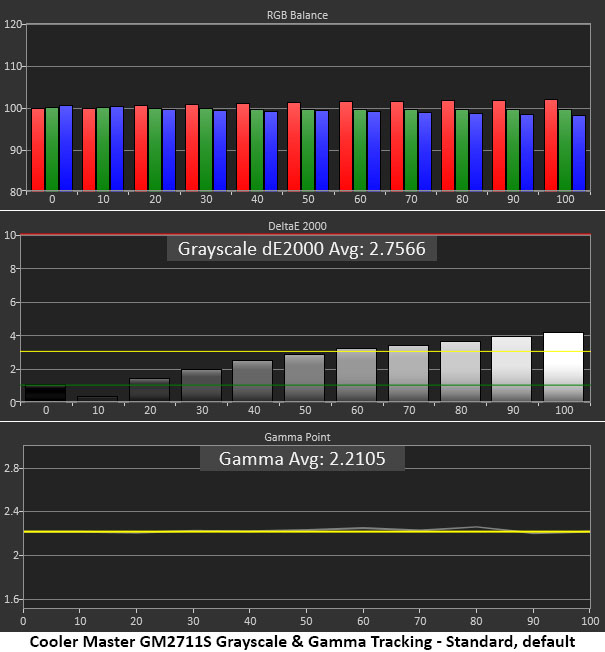
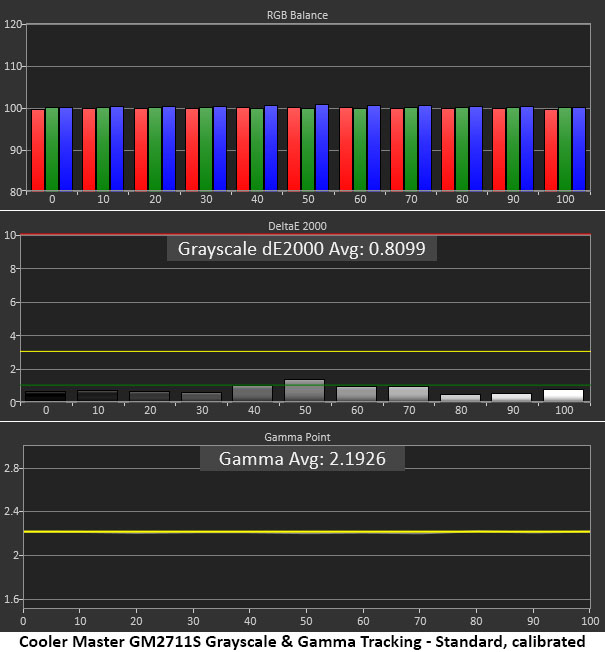
There are some barely visible red errors from 60 to 100%, but you’ll have a hard time seeing a problem in content. Red is the most forgivable error because it’s the hardest to perceive. A slightly warm picture is better than a slightly cool one because it retains more depth and dimension. Gamma is about as close to perfect as I’ve seen. That part of the chart is exceptional.
Calibration takes the GM2711S to a professional level. Gamma is still perfect so that’s a win-win. It doesn’t get better than that.
Comparisons
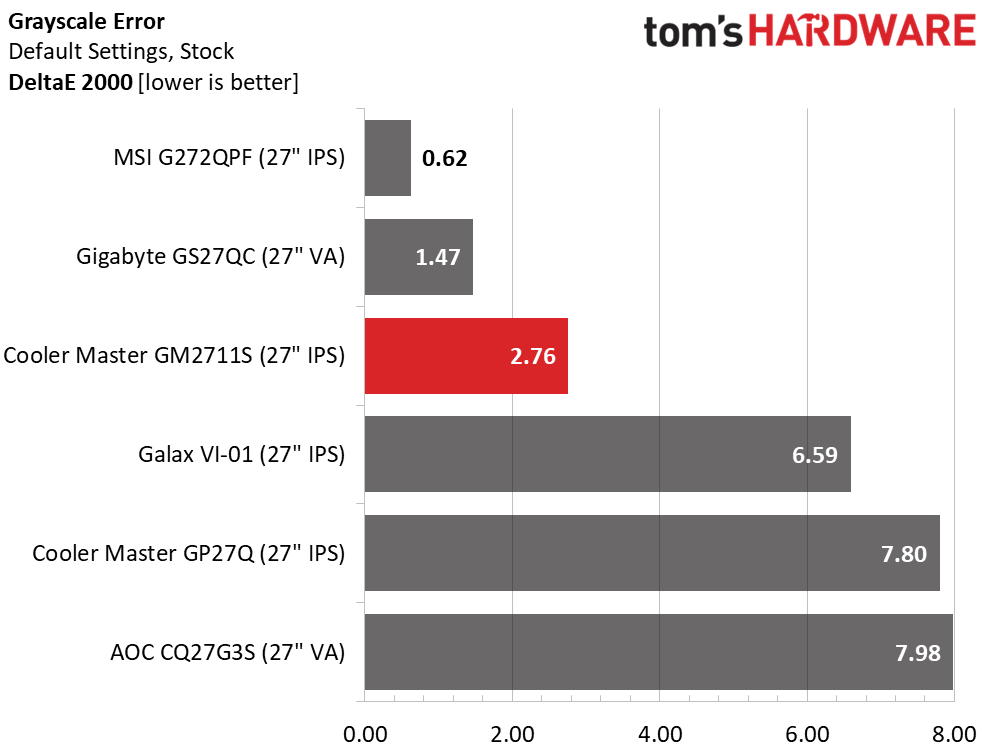

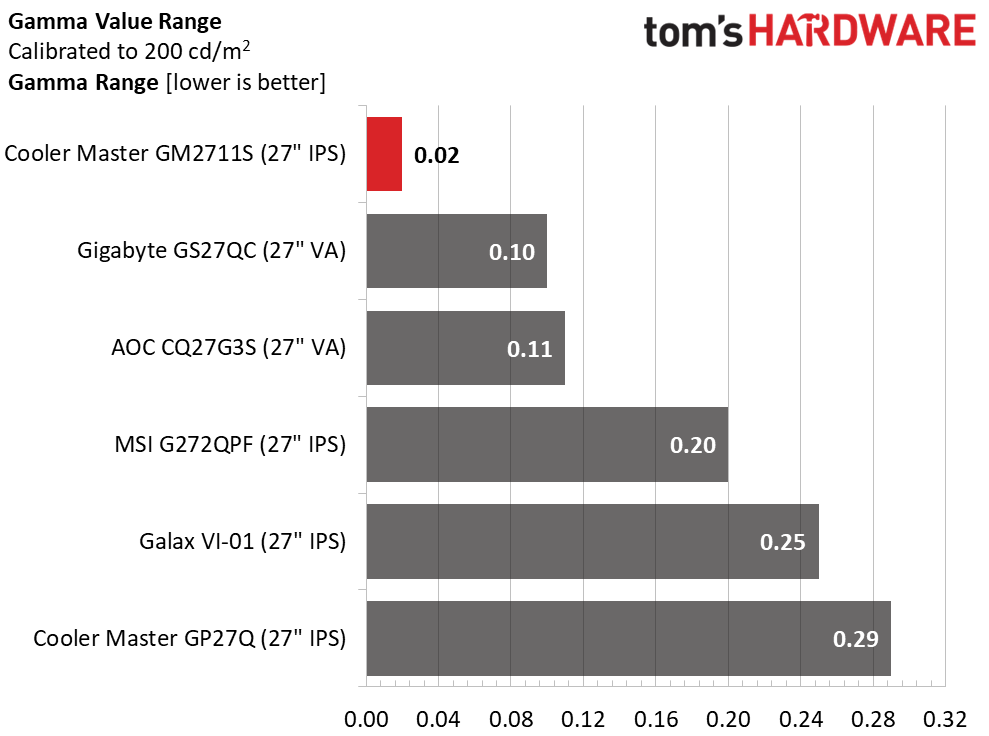
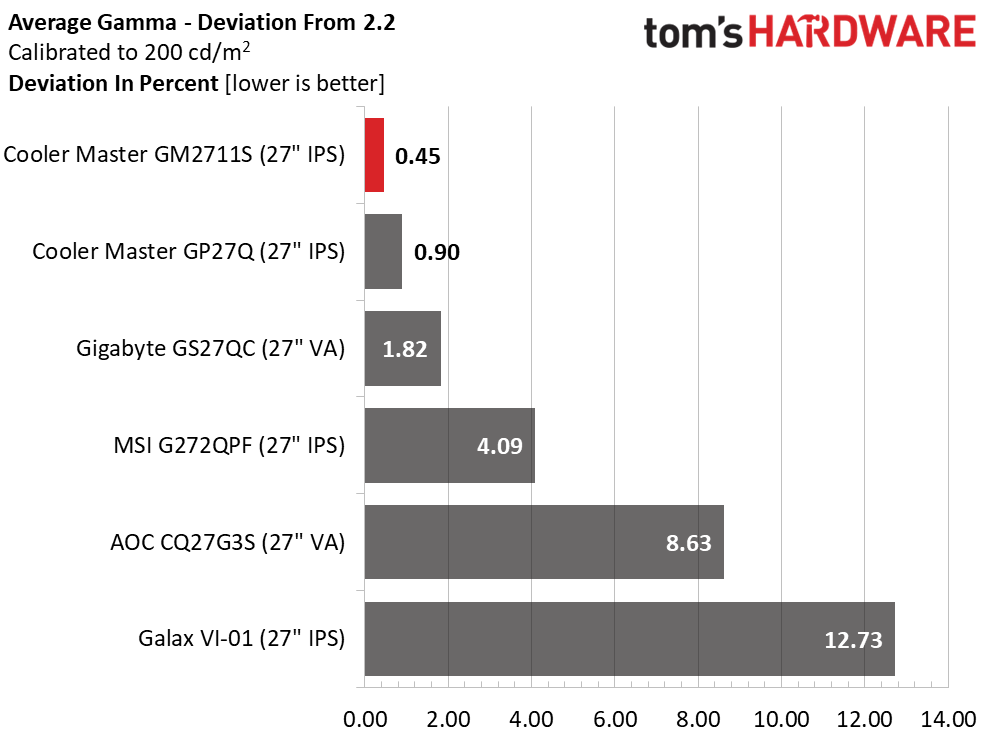
2.76dE is a perfectly acceptable out-of-box result. The GM2711S has been well tuned at the factory, especially considering it doesn’t have a certification. Cooler Master doesn’t tout its default accuracy, but it easily could.
It’s still in third place after adjustment, but the entire group has excellent grayscale tracking once calibrated. Gamma is the superstar here with a range of values that only varies by 0.02 and is only 0.45% off the 2.2 reference. That is truly exceptional performance.
Color Gamut Accuracy
Our color gamut and volume testing use Portrait Displays’ Calman software. For details on our color gamut testing and volume calculations, click here.
Get Tom's Hardware's best news and in-depth reviews, straight to your inbox.
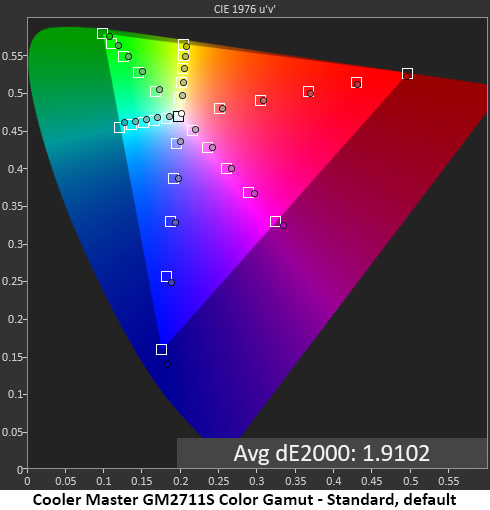

The GM2711S posts similarly solid results in the gamut test. Secondary hues are only a hair off their targets but not far enough to be visible in content. And check out that gamut coverage. Even green is almost fully rendered. That extra saturation helps mitigate the below-average contrast.
Calibration makes a measured difference but not a visible one. Whites and grays are now completely neutral, but color looks the same. The GM2711S has gone from very accurate to very, very accurate.
Comparisons

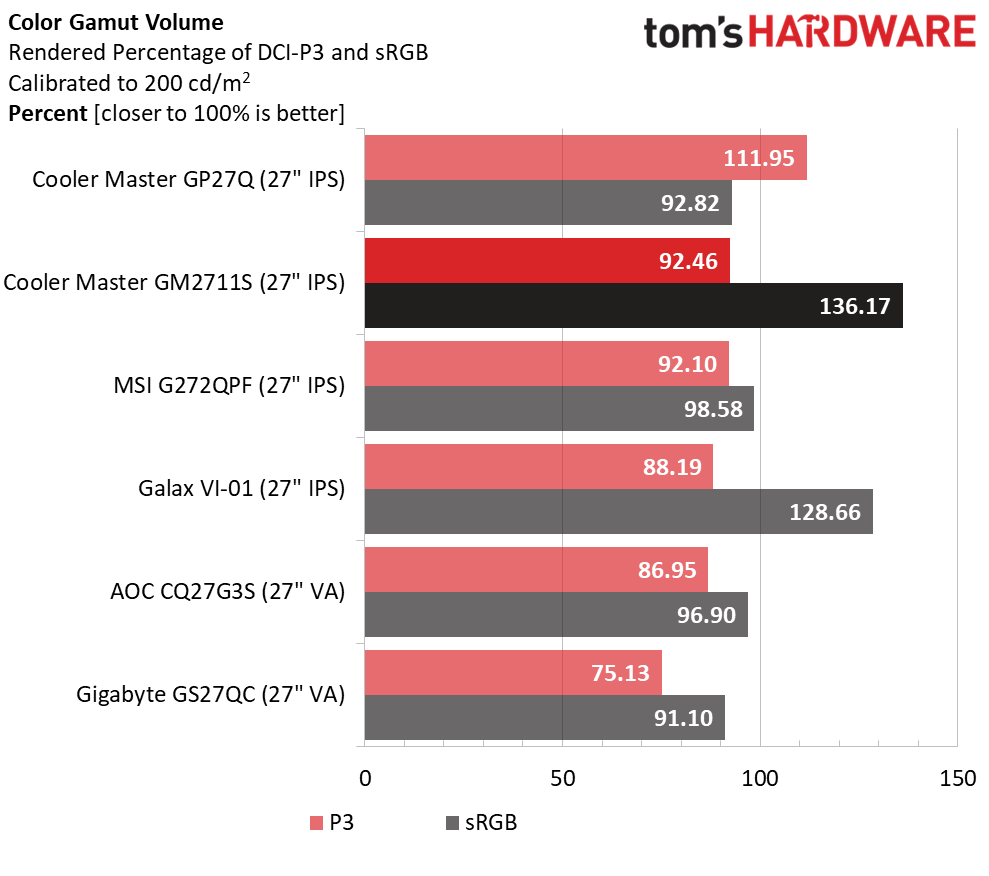
The GM2711S’s average gamut error started at 1.91dE, so a drop to 1.56dE is almost nothing. The default score would put it in second place among the other screens that have been calibrated. That’s an ideal situation and extra impressive considering the $300 price tag. This is pro-level performance.
Only the other Cooler Master screen has a larger gamut than the GM2711S. It obviously makes color volume a priority. I noted that the MSI is quite close in this test. I also noted that the GM2711S has no sRGB mode. If you’re buying it for gaming and general use, that isn’t a problem. No one will turn away from a more colorful image. But if you need sRGB for critical work, it isn’t provided here.
Test Takeaway: The only negative I observed in the GM2711S’s color tests was the lack of an sRGB mode. It is among the best for out-of-box accuracy and calibrates to a very high standard. Its gamma tracking is, for all intents and purposes, perfect. Though contrast is lower than average, color volume and fidelity are higher than the norm, especially at the $300 level. I doubt any user will be dissatisfied with the GM2711S’s SDR image quality.
MORE: Best Gaming Monitors
MORE: How We Test PC Monitors
MORE: How to Buy a PC Monitor
MORE: How to Choose the Best HDR Monitor
Current page: Grayscale, Gamma and Color
Prev Page Brightness and Contrast Next Page HDR Performance
Christian Eberle is a Contributing Editor for Tom's Hardware US. He's a veteran reviewer of A/V equipment, specializing in monitors. Christian began his obsession with tech when he built his first PC in 1991, a 286 running DOS 3.0 at a blazing 12MHz. In 2006, he undertook training from the Imaging Science Foundation in video calibration and testing and thus started a passion for precise imaging that persists to this day. He is also a professional musician with a degree from the New England Conservatory as a classical bassoonist which he used to good effect as a performer with the West Point Army Band from 1987 to 2013. He enjoys watching movies and listening to high-end audio in his custom-built home theater and can be seen riding trails near his home on a race-ready ICE VTX recumbent trike. Christian enjoys the endless summer in Florida where he lives with his wife and Chihuahua and plays with orchestras around the state.
